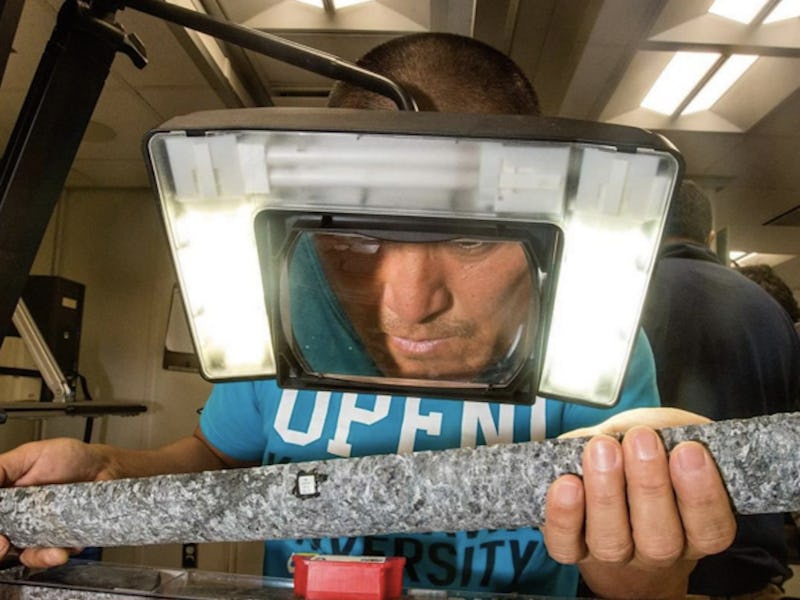Expedition to Drill to the Earth's Mantle Ends Today
The JOIDES Resolution took to the high seas to get below the Earth's crust in an effort to examine its mantle up close.

“Earth is a contaminated planet,” says “Lucas” in his podcast documenting the advances made aboard the JOIDES Resolution ship. “Life has evolved and taken over virtually every surface. Over the last couple decades, we’ve discovered that you’re even able to find life in a hole at the bottom of the sea.”
The Joint Oceanographic Institutions for Deep Earth Sampling (JOIDES) expedition 360 on the JR left port on November 30, 2015, to drill to the Earth’s mantle. Titled South Indian Ridge Moho, the exploration concluded today.
JOIDES explores the ocean floor and includes other exhibitions of the less sci-fi sort. “The JR takes core samples and measurements from under the ocean floor, giving scientists a glimpse into Earth’s development and also a scientific means of measuring climate and environmental change throughout a significant part of our planet’s history,” notes the JOIDES Facebook page. This helps them evaluate things like when the dinosaurs met extinction.
On the 360 voyage, the crew planned to drill 1,500 meters into the Atlantis Bank gabbroic massif, where they believe the mantle rises above the Moho border (Moho is where the crust and the mantle meet). They drilled to recover gabbros, rocks that form when slow-cooling magma is trapped under the Earth’s surface, and crust-mantle transition to “understand the processes that creates mid-ocean ridge basalt,” among other things like, whether or not the Moho “at slow spreading ridges can be a serpentinization front.” This will help them uncover more data about magma, the Earth’s mantle, melt, and crust.
On the 360 voyage, the crew planned to drill 1,500 meters into the Atlantis Bank gabbroic massif, where they believe the mantle rises above the Moho border (Moho is where the crust and the mantle meet). They drilled to recover gabbros, rocks that form when slow-drying magma is trapped under the Earth’s surface, and crust-mantle transition to “understand the processes that creates mid-ocean ridge basalt,” among other things like, whether or not the Moho “at slow spreading ridges can be a serpentinization front.” This will help them uncover more about magma.
Humans have yet to reach the Earth’s mantle, but have been trying since the 1960s to do so. So, how did this trip end? Well, as of a week ago, they dug a hole over 700 meters deep with 90% recoveries “amazing for hard rock drilling,” the last podcast notes. A second mission is in the works, as well. And the plan is that humans will reach the mantle within a mere five years. At that point, Jules Verne will return from the grave for some serious celebration of human progress.